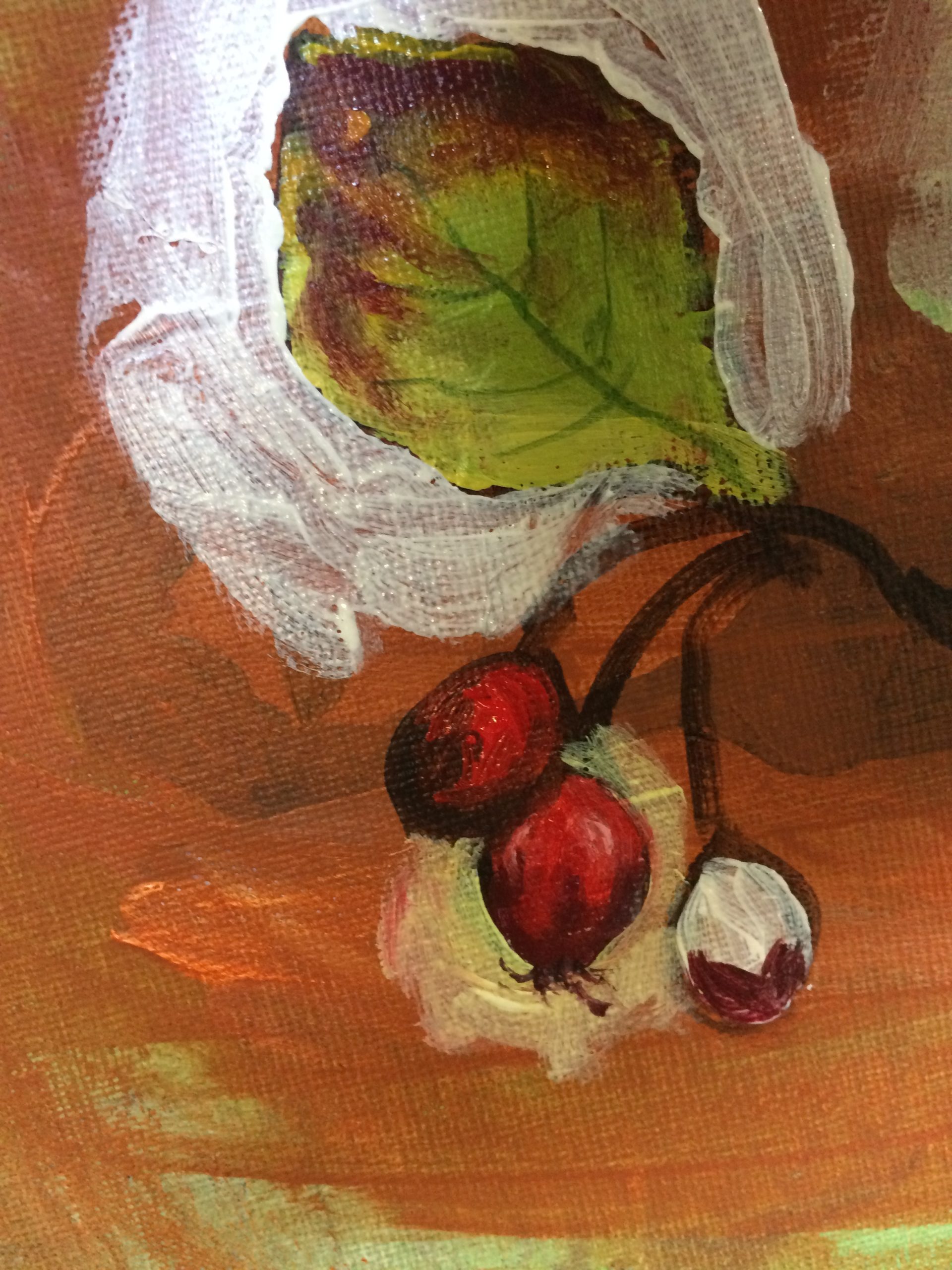When working in watercolour you should always work light to dark.
Caroline started by lightly sketching the outlines of the leaves in pencil and then she used masking fluid to map out the main veins. Then it was left to dry.
Using a round brush with a point she started by putting a wash of yellow with a little red over the entire leaf. While it was still wet, she dropped in a red mixture around the edges of the leaf, letting it do its own thing. Next she put in the green, using a bright green mix (cooled down with a little bit of the yellow wash). Using a clean brush she pulled out some veins from the still masked area. Next, she put in the leaf tips using a dark brown and a rigger. If at this stage you can see that your colours are not strong enough this is easily rectified by first adding water, then dropping in more of the desired colour. When you’re happy with the painting rub out the masking fluid with your fingers. Then paint in the veins using a pale yellow and finishing with a dark reddish brown.
Below is the leaf still with the masking fluid.
If you don’t want to use masking fluid you can carefully paint around the main veins leaving them as white paper, as with the small leaf below. You can then simply go in with a bright red paint for the vein and a darker colour underneath for depth.
The picture shows the final paintings using both methods
When using acrylic you should work from dark to light.
Caroline started the painting by outlining the leaves using Hooker’s green. She mixed three shades of green; dark, medium and light. She first painted on the dark green where the veins were, then blocked in the leaf using the medium colour and finally used the light colour for all the highlights. She let this dry. She mixed up some quite runny yellow paint and used a rigger to drag the yellow vein over the top of the darker green . She finished it off by putting a dark green colour over the bottom of the yellow vein for depth.
For the berries she started by painting them white. Next, she mixed three shades of red and started with the dark red to put in the darker areas, then filled in the berry with the medium shade and lastly the highlights in the light shade. By painting the berries white first it is easier to get a really vibrant red.
Report and photos by Lesley McBride



